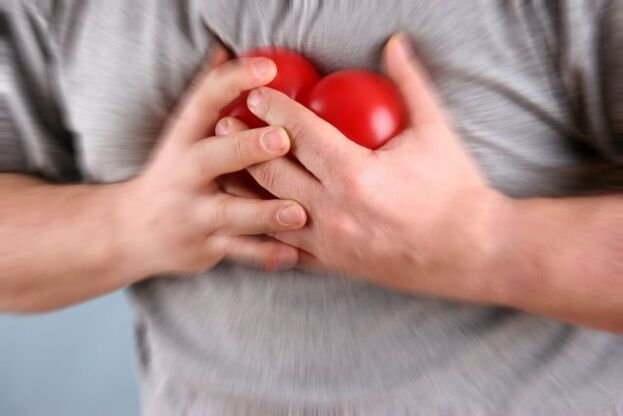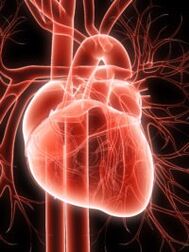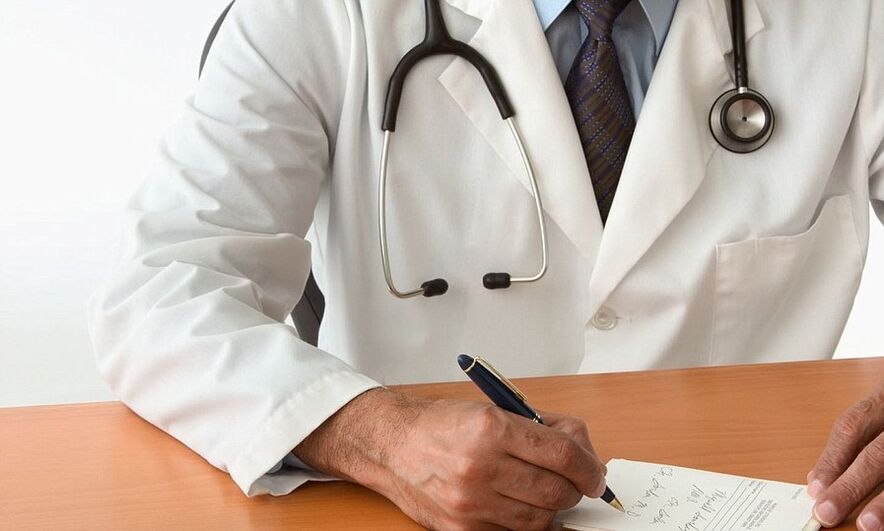Hypertonic disease is one of the most common pathologies of the cardial sphere, which is currently diagnosed with each third resident of our 45 -year -old planet. In recent years, the disease has become much younger and now often among the number of hypertension patients, you can see young people with high pressure. The main danger of the pathological state lies in its complications. GB can lead to a heart attack and stroke, cause decomposition of the aneurysm of the main vessels, causes the development of deteriorated renal functioning and strong deterioration in the quality of the vision.
Human blood pressure has a higher systolic heart rate or value, as well as diastolic pressure or its lowest and renal level. According to WHO standards, the standard of these indicators should not be more than 139/89 mm Hg. Art. , Otherwise, it is customary to talk about hypertension. Early diagnosis and timely treatment of hypertension: a person's opportunity to prevent the appearance of pathological changes of many internal organs, which will maintain health and enjoy a complete life for many years.
Reasons
Unfortunately, modern medical science has not yet been able to completely solve all probable causes of hypertension, but most of them are known by doctors. To identify which factor led to the development of the disease, only an experienced specialist, who in the diagnostic process uses not only its knowledge, but also the results of numerous studies that confirm or refute the presence of signs of hypertension in a person.
The main reason for the growth of blood pressure is a violation of the activity of the sympathetic-adrenaline system of a person, that is, the constant irritation of the center responsible for reducing vessels in the brain.
This can happen under the influence of numerous exos, as well as endogenous factors that contribute to a sudden cramp of blood vessels.
Hypertension symptoms may appear in people with exogenous factors placed in the risk of developing a pathological state:
- frequent tensions and severe nervous tension;
- incorrect nutrition;
- sedentary lifestyle;
- irregular workday, work in a night shift;
- regular consumption in large amounts of strong alcohol and smoking;
- drugs;
- Intensive sports
Among the endogenous factors, age and poor inheritance stand out, when the disease can pass from parents to a child. In addition, the development of hypertension contributes to:
- atherosclerosis vascular lesions;
- obesity;
- Metabolic diseases, in particular, diabetes mellitus, hyperthyroidism;
- Kidney diseases;
- Increased levels of calcium and sodium in the blood;
- Hormonal changes, which are the most common cause of high pressure in women during pregnancy and menopause.
Classification
Currently, there is more than one hypertension classification. The disease is generally distinguished by the nature of the course, the presence of complications, the reasons for development, pressure indicators and much more.
Modern cardiologists distinguish several degrees of hypertension (depending on high pressure indicators):
- 1 degree of pressure increases to 159-140/99-90 mm Hg. Art. ;
- 2 degrees in the arrows of a mechanical tonometer, an indicator 179-160/109-100 mm RT is diagnosed. Art. ;
- 3 degrees: persistent or periodic increase in pressure more than 180/110 mm Hg. Art.
According to the generally accepted classification of whoos, there are such stages of the disease:
- Increase in the first stage in pressure without damage to the target organs;
- 2 stages: the presence of signs of damage to the internal organs, among which the main objective is the heart, blood vessels, eye structures, brain and kidney;
- Stage 3: A stable increase in blood pressure at the bottom of the development of complications, of the manifestations of which a person can die.
Hypertensive disease has its own types of currents, among which:
- A benign type or a slow GB variant, when the symptoms of pathology develop very slowly, for tens of years, and the risk of complications is evaluated as a minimum;
- An evil ailment, in which acute jumps in pressure, the lesions of the target organs and frequent hypertonic crises are recorded (this version of the disease is difficult to lend itself to pharmacological therapy).
Symptoms
The disease in the initial stages of its development proceeds almost asymptomatic, which complicates its early detection. In such patients, greater accident pressure can be found when they undergo a physical examination or during the usual income in the clinic.

A more complex type of hypertension characterizes a series of characteristics that significantly worsen the quality of life of a person and are the reason for their attraction for specialists. The main symptom of the disease is an increase in blood pressure above 140/90 mm Hg. Art. This condition causes the development of headaches, which are the result of the narrowing reflection of the vessels of the brain. As a general rule, people prone to hypertension complain about the appearance of pain in the neck and temples, which is pulsating, which is distinguished by its severity and sudden development. Such pains and pulsation do not pass after taking analgesic agents.
Often, hypertension feels solo dizziness, which can occur after simple work. The symptom is often accompanied by nausea and vomiting, as well as general malaise due to an increase in intracranial pressure. The narrowing of the vessels of the auditory device causes noise in the ears when it seems to a person that their ears are very placed, and practically loses its ability to normally perceive the sounds of the environment.
The violation of coronary blood flow leads to the development of myocardial ischemia. Such patients have difficulty breathing and rag pain that are good for correction with nitrates. The organ at this time works in an improved mode to push the blood batch to narrow trunk vessels. Each angina pectoris attack accompanies a fast pulse, a pronounced beat and a risk that such a formidable complication of a pathological state arises as myocardial infarction.
With hypertension, the deteriorated eyes of the eyes with a strong deterioration in the vision and development of the angiopathy of the hypertension of the vessels of the retina. The bottom of the eye is also involved in the pathological process, which swells and squeezes the visual nerve. At this time, a person points out "chicken skin" in front of their eyes, dark and similar circles.
A complication of high pressure symptoms in women occurs more frequently during menopause when menopause occurs. During this period, there is a hormonal restructuring in the body of the weakest sex representative with a violation of the production of biologically active substances that control the normal level of pressure. That is why hypertension is the most common consequence of menopause among women.
Complications
GB refers to the number of insidious diseases that progress slowly and is often diagnosed in the stage of the appearance of the first complications of the pathological process. With a constant increase in blood pressure in the target organs, distributing and sclera changes take place, which leads to gross functionality. First, kidneys, brain, heart, visual analyzer and blood vessels suffer from arterial hypertension.

There are several risk factors that affect the development rate of complications with hypertension and the degree of its severity:
- bad habits, especially smoking;
- a sedentary lifestyle and a higher body mass index;
- Increased blood cholesterol and hyperglycemia;
- frequent tensions;
- a potassium and magnesium deficiency in the body;
- changes related to age;
- Hereditary predisposition.
With a hypertensive disease, the heart is forced to work in high load conditions, which is associated with the need to push the blood into the narrow vessels. Over time, the myocardial wall is thick and in a person there is hypertrophy of the left ventricle and the hunger of oxygen of the heart muscle.
On the heart side, several types of hypertension complications are distinguished:
- ischemic disease;
- angina pectoris;
- Atherosclerosis of coronary vessels;
- acute form of heart failure in the form of myocardial infarction;
- Chronic heart failure.
A high level of blood pressure causes the appearance of brain disorders in a person, which in practice manifests from severe dizziness, headaches, ears, memory reduction and more. There are several options for complex brain complications of hypertension:
- Encephalopathy with vestibular disorders;
- Ischemic and hemorrhagic stroke;
- Cognitive disorders of brain activity.
As you know, the kidneys control the amount of water and salt in the body. But with an increase in blood pressure, they can completely perform their main work. This contributes to the appearance of a series of complications, among which:
- Kidney failure;
- violation of the filtering function and release of fluid;
- Nephrosclerosis.
Such disorders lead to the development of a series of symptoms in hypertension, which indicate a pathology of the kidneys. A sick person begins to complain about the general weakness, discomfort, emergence, unreasonable nausea.
The defeat of the eyes is manifested by the appearance of hemorrhages in the retina, edema of the optical disc and a progressive loss of vision. On the part of the peripheral vessels with arterial hypertension, the most formidable complication is the stratification of its wall, in particular, the known aortic aneurysm, which forms and proceeds asymptomatic, often causing a sudden fatal result.
Diagnosis
The diagnosis of GB with the establishment of the stage and the degree of development of the disease is an important step towards the appointment of the proper treatment of the pathological condition. That is why, when the first signs indicate that they indicate a hypertensive disease, it must immediately communicate with a medical institution to discover the causes of greater pressure and methods of its correction.

A complex of diagnostic measures in case of suspected hypertension includes a series of laboratory and instrumental studies, which include:
- Laboratory blood analysis that allows you to determine the level of potassium and magnesium, creatinine, harmful cholesterol, glucose and the like;
- Biochemical examination of urine with the determination of the amount of protein;
- Electrocardiography (ECG);
- Ultrasound of the heart;
- Doppler Floometry;
- Inspection of the bottom of the eye.
The diagnostic procedure for hypertension, which allows to determine the degree of disorders, consists of two stages:
- The first stage is the determination of the clinical manifestations of the disease from the words of hypertension and obtaining the results of additional studies;
- The second stage is a special study that allows you to determine the exact degree of the disease and the presence of its complications in the patient using magnetic resonance therapy (MRI) or the X -ray test.
The daily monitoring of blood pressure allows the precise image of the course of the disease. Thanks to this, you can establish the range of pressure fluctuations throughout the day and determine its average indicator, which will characterize the degree of hypertension. The main drawback of this study is its high cost.
Treatment
The treatment of hypertension exacerbations should occur in a cardiological hospital, where there is a possibility of constant control over the level of blood pressure. In addition, if necessary, the doctor can amend the patient therapy plan and prescribe more effective medications in each specific clinical case.
They begin to treat the disease with the appointment of a special diet, which strictly limits the salt table, fats and fried dishes, as well as smoked meats, flour products. Hypertensive nutrition aims to improve the general condition, avoiding the development of edema, standardization of weight and the like.
According to the new European recommendations, GB treatment must be comprehensive and must include a series of medications, whose effect aims to reduce blood pressure and eliminate the risks of transformation of the disease in a malignant version of its course or the development of complications of the pathological state. Among the most used drugs for hypertension should be distinguished:
- Alpha blockers;
- Gangloclocators;
- ECA inhibitors;
- beta blockers;
- Calcium channel blockers;
- diuretics
The doctor pays special attention to the appointment of diuretics. The fact is that not all diuretics are safe for the hypertension body because their properties wash the potassium. That is why the use of such drugs should be combined with the use of potassium preparations under the control of the biochemical composition of the blood. In addition, diuretics not only reduce pressure, but also eliminate tissue edema by excreting excess sodium.
It is strictly forbidden to treat hypertension independently.
Nor is it recommended to use hypotensive medications of traditional medicine without coordinating such use with the attending physician. The prohibited action, such as the main contraindication, can cause an urgent hypertensive crisis and the need for the patient's immediate room in a specialized hospital to clarify the causes of complications and resolve the issue of additional tactics of its elimination.

Prevention
For hypertension prevention, it is necessary to undergo a set of measures aimed at the detection and timely elimination of the risks of the development of a pathological state, as well as the stabilization of the already greater pressure. To prevent the appearance of the first signs of the disease, a person must normalize their lifestyle, abandon bad habits and salt consumption, increase their physical activity and also lose weight. Special attention should be paid to possible patients in which the risk of developing hypertension is hereditary. This category of people should always be at hand to measure the pressure, with which they can monitor their condition.
You can notice the appearance of blood pressure disorders if:
- Direct an active lifestyle (Medical Physical Education, physical state, massage, fresh air walks, skiing, swimming in the pool) and regularly train in the gym;
- abandon harmful food, smoking and not drinking alcohol;
- Reduce the use of salt to 3-4 g per day;
- Prohibit yourself to eat foods with a high content of animal fats, preservatives, cholesterol;
- Observe a clear daily routine and practice a complete dream;
- Avoid the appearance of excess fat deposits, which cause obesity;
- avoid stressful situations;
- Submit regularly to a preventive examination by a cardiologist and take the necessary tests;
- When the first signs of increasing pressure appear, seek immediately medical help.
The people to whom the tendency to hypertension was inherited must be attentive to their state of health, practice sports and examine regularly. GB's finished diagnosis implies the dispensary observation of patients and, if necessary, send them to the commission to establish disability.
















